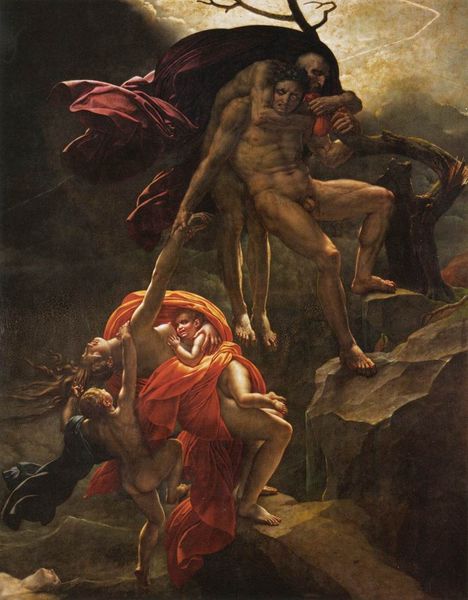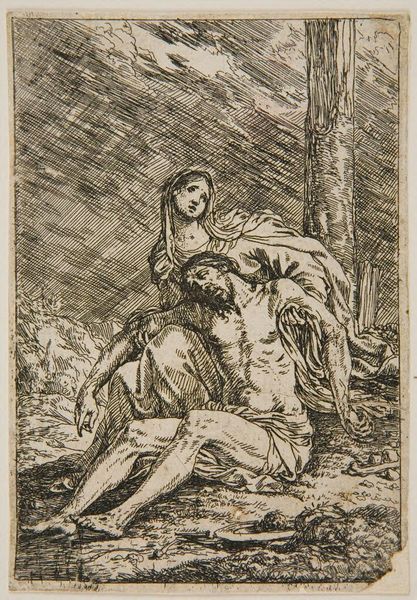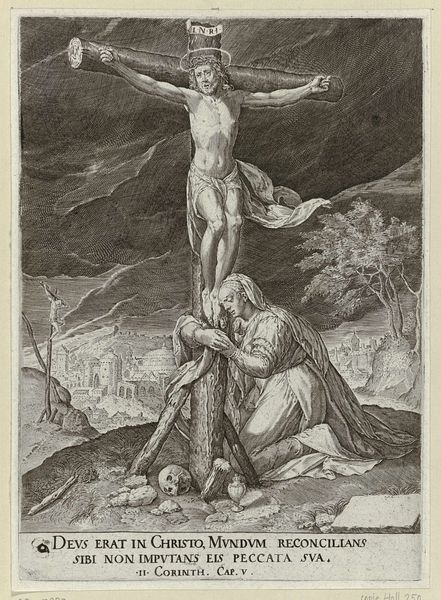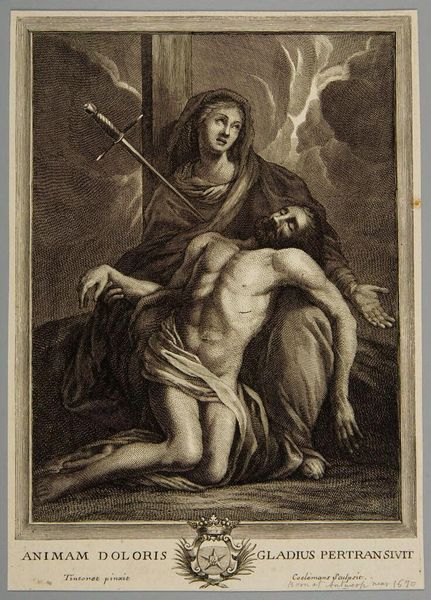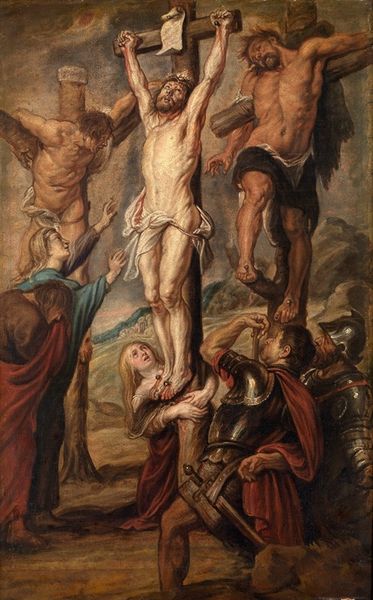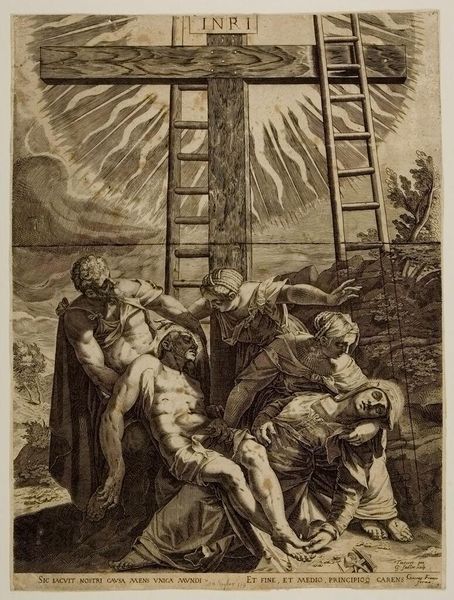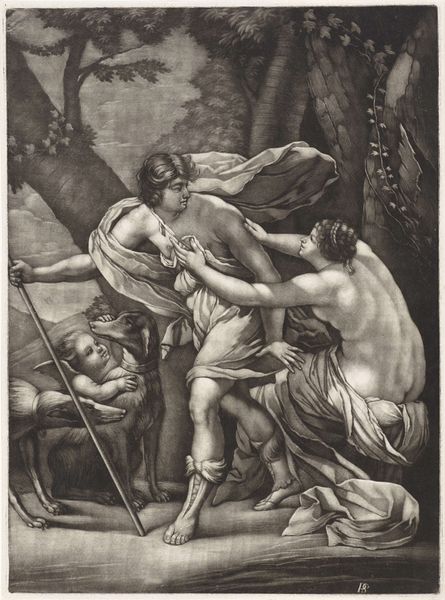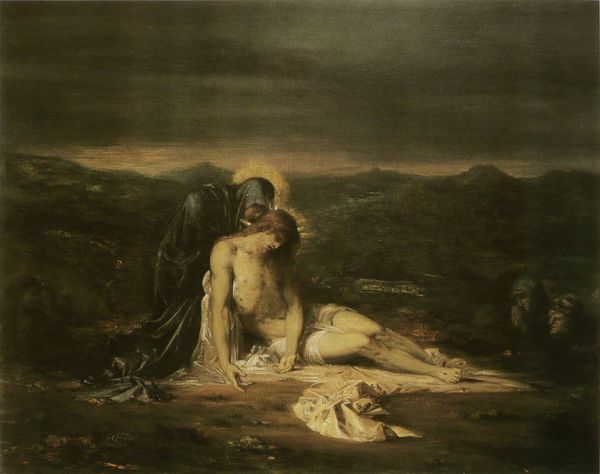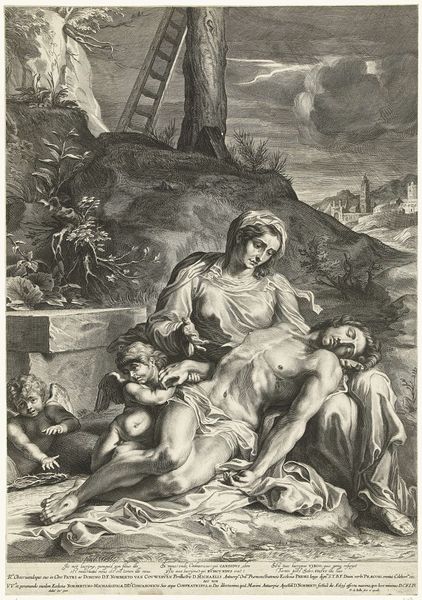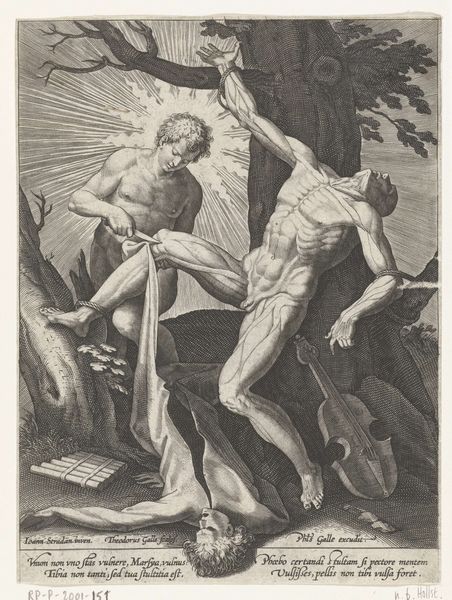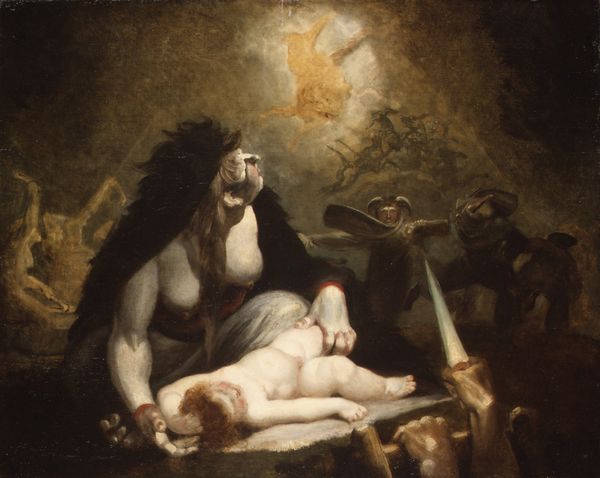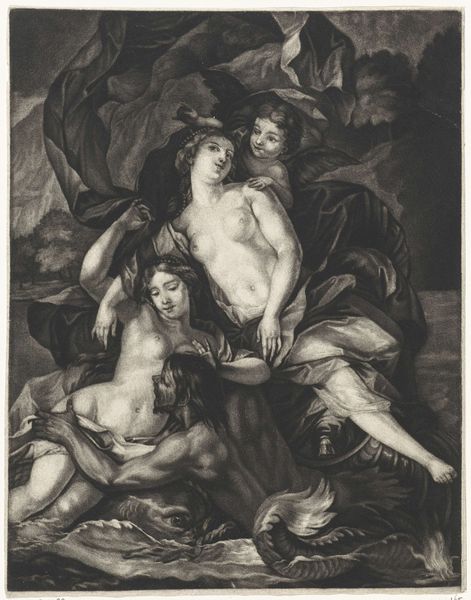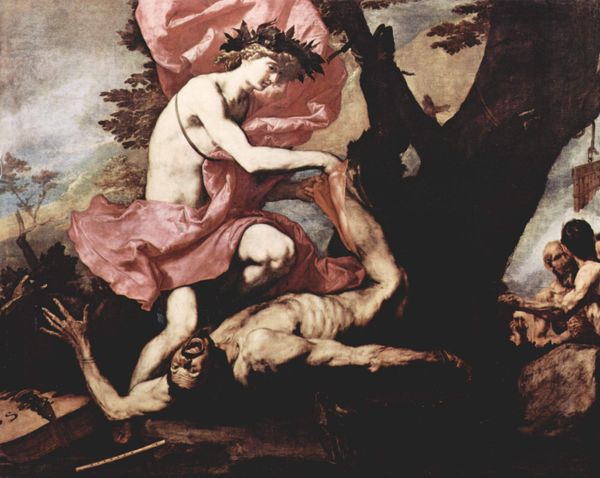
Pietà (The Lamentation of Christ) 1575
0:00
0:00
elgrecodomenikostheotokopoulos
Philadelphia Museum of Art, Philadelphia, PA, US
painting, oil-paint
#
portrait
#
painting
#
oil-paint
#
mannerism
#
oil painting
#
jesus-christ
#
group-portraits
#
christianity
#
mythology
#
history-painting
#
nude
#
portrait art
#
virgin-mary
Dimensions: 29 x 20 cm
Copyright: Public domain
Editor: It’s so somber, the grief almost tangible. There's something haunting about the figures clustered together. Curator: Indeed. This oil on canvas, titled "Pietà (The Lamentation of Christ)," was completed around 1575 by El Greco. You can find it here at the Philadelphia Museum of Art. The composition immediately signals its religious theme. Editor: The use of oil paint allows for that incredible blending, giving a soft, almost dreamlike quality. Are those the crosses from the crucifixion looming in the background? It lends such gravity. Curator: Precisely. Considering the history of "Pietà" as a subject, it gained enormous traction in the late Middle Ages, tied intrinsically to shifts in Christian devotional practices. These paintings became deeply significant social and spiritual tools. Editor: I’m curious about El Greco’s artistic process here, the elongation of the figures, that very distinct stylistic choice. How would you characterize its effect? Curator: Well, his embrace of Mannerism is unmistakable, evident in those stylized forms, dramatic lighting, and expressive color palette. This, arguably, was a direct challenge to the conventions of classical Renaissance art—a bold artistic statement, particularly at that time. It moved religious iconography beyond pure representation. Editor: Do you see a direct impact of art consumption or its role within society in his choices? The fact it hangs in Philadelphia. Curator: Yes. El Greco certainly intended for this to elicit strong emotional reactions from viewers, meant for private devotion in an elite surrounding. Furthermore, its eventual display and preservation in museums shape our contemporary understanding and appreciation of religious narratives through artistic craftsmanship. Its availability reinforces that history's visibility. Editor: So, it functions not just as religious art but also as a record, a material object that informs societal perceptions of religious history. It all blends together, and continues in the context of this museums, now. Thank you. Curator: Of course. Its enduring power as a symbol of mourning makes us rethink religious history.
Comments
No comments
Be the first to comment and join the conversation on the ultimate creative platform.
